-
title Monzen Beach one word explanation captivating when viewed from the sea keywords geologynaturebeautiful confirm, register Oga Quasi-National Park conservation laws and ordinance Natural Parks Act 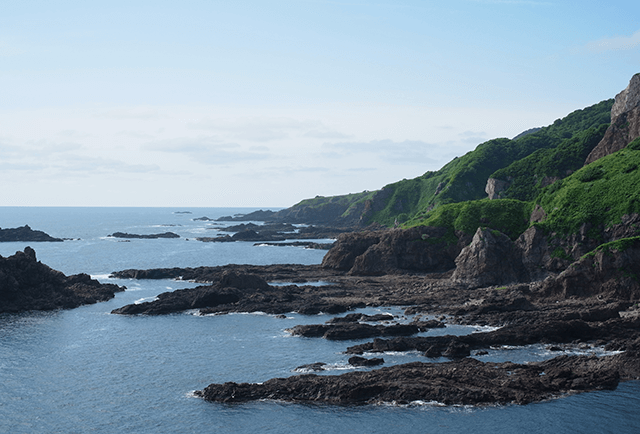
The road running north along the west coast of Oga Peninsula from Monzen District was opened by the Japan Self-Defense Forces in 1970 as Daisankyo Toll Road (it is now no longer a toll road and is part of Prefectural Highway 59). Before that, ships were the primary form of transport. The cliff face on the western side meets the Sea of Japan, creating a magnificent view. It is thought that about 30 million years ago, when the Japanese islands were part of the eastern edge of the Eurasian continent, a volcanic eruption caused mudslides resulting in this cliff, which has since been weathered into various shapes.
-
title Ryugashima (Dragon) Rocks one word explanation The shape of a rising dragon keywords geologynaturebeautiful confirm, register Oga Quasi-National Park conservation laws and ordinance Natural Parks Act 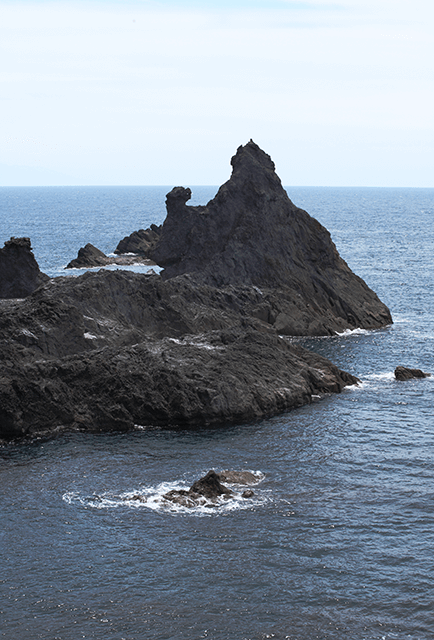
This 30m-tall rocks got its name from the fact that it looks like a dragon flying up to the heavens. Masumi Sugae wrote of it: “A noble island, eternally unmoving amidst the crashing waves.” When viewed from the ocean, it used to look just like a dragon rising up to the heavens, but in 1939, an earthquake caused the “head” to crumble.
-
title Monzen Otaki Falls one word explanation People have prayed for marine safety at this holy waterfall keywords naturehealingbeautiful confirm, register Oga Quasi-National Park conservation laws and ordinance Natural Parks Act 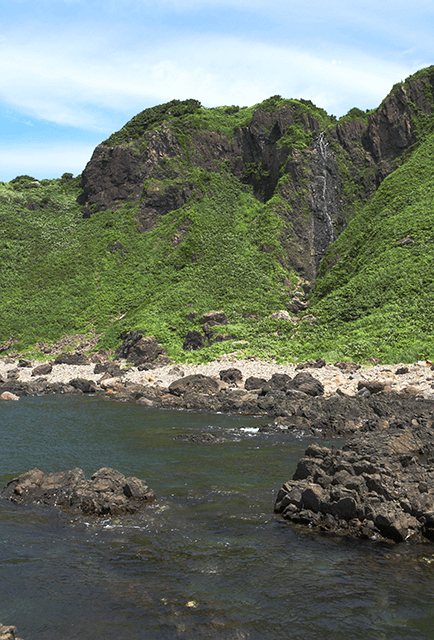
At about 60 tall, Monzen Otaki Falls is the largest of several waterfalls on the cliffs of the western shore of Oga Peninsula. It used to simply be called Otaki, meaning “the large waterfall”, but it is now prefaced by the place name so as not to be confused with the large waterfall near Hachibodai Observation Tower. Back when Fudo Myo’o, the god of fire, was enshrined in the waterfall basin, sailors would pray for safe journey at the waterfall.
-
title Butaijima Rocks one word explanation Han Emperor Wu descends, a shrine maiden dance is performed keywords geologyhistorylegend confirm, register Oga Quasi-National Park, One hundred strange sotones from Japan conservation laws and ordinance Natural Parks Act 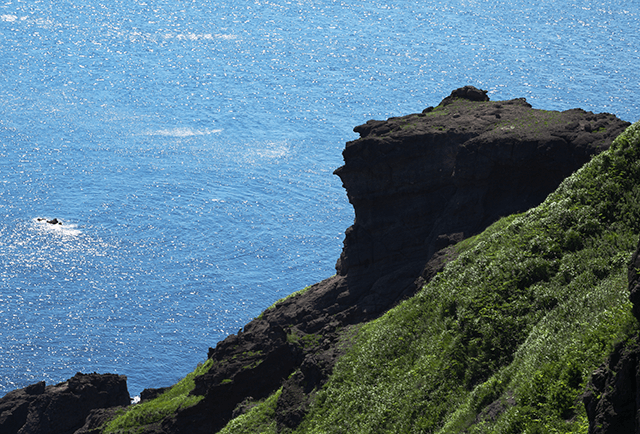
There is a legend that long ago Emperor Wu of Han visited and the shrine maidens danced for him. Although the word “island” is in the name (Butaijima means Stage Island), this 60m tall flat rock formation which rises into the sky like a stage is actually on land. It has been the subject of many paintings and was called by this name as far back as the Edo Period. It is thought that Butaijima Rocks was basaltic wave-cut terrace, formed by volcanic activity and then eroded by waves, before rising out of the water.
-
title Koujaku no Iwaya Sea Cave one word explanation breeding grounds of the Southeast Asian long-fingered bat keywords geologynaturehistory confirm, register Akita Prefectural Natural Monuments, Oga Quasi-National Park conservation laws and ordinance Akita Prefecture Ordinance for the Protection of Cultural Properties, Natural Parks Act 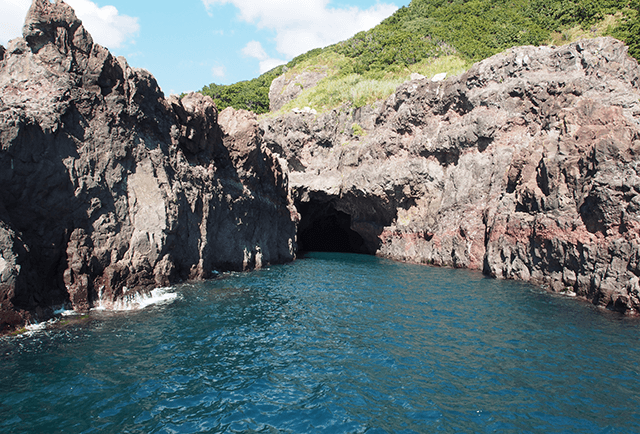
There are 10 caves of various sizes on the west coast of Oga Peninsula. These sea caves were carved by waves eroding the soft rock over a long period of time. Koujaku no Iwaya Sea Cave is the largest cave on the western shore and is a known breeding spot for the Eastern Bent-winged Bat. According to legend, there is a door deep within the cave which hides a goddess.
-
title Koumori no Iwaya Sea Cave one word explanation breeding grounds of the Southeast Asian long-fingered bat keywords geologynaturehistory confirm, register Akita Prefectural Natural Monuments, Oga Quasi-National Park conservation laws and ordinance Akita Prefecture Ordinance for the Protection of Cultural Properties, Natural Parks Act 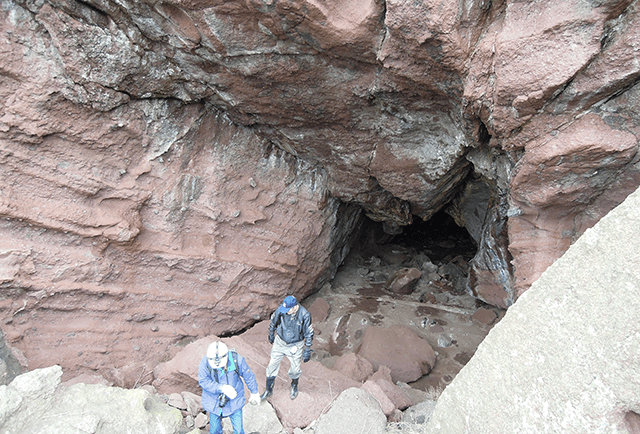
As its name suggests, Koumori no Iwaya Sea Cave (Bat Sea Cave) is said to be home to over 10,000 Little Japanese Horseshoe Bats and Eastern Bent-winged Bats, both of which have been designated by the prefecture as natural monuments. A drawing by Masumi Sugae shows a boat entering the cave, but in reality the entrance is about 3m from the water.
-
title Daisankyo Rocks one word explanation natural stone bridge keywords geologybeautifulexperience confirm, register Oga Quasi-National Park, One hundred strange sotones from Japan conservation laws and ordinance Natural Parks Act 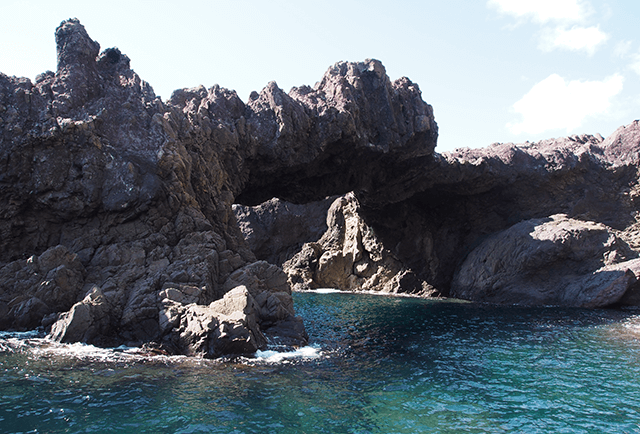
With a height of about 10m, this natural stone bridge was carved out by a long period of wave erosion. It is now connected to land, but there is record of it being surrounded by water as recently as the beginning of the Edo Period. This really makes you feel the dynamic movement of the earth. Daisankyo Rocks is made up of basaltic rock formed by volcanic eruption. Created by volcanic activity 30 million years ago and sculpted by the waves, the best way to view this natural rock formation is from a sightseeing boat on the sea.
-
title Shiraito no Taki Falls one word explanation the west coast bluffs flow like silk keywords naturebeautifulhealing confirm, register Oga Quasi-National Park conservation laws and ordinance Natural Parks Act 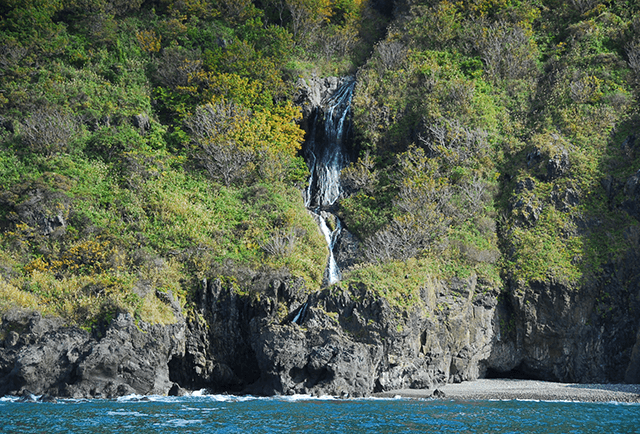
The way the water falls straight down the cliff of Mt. Honzan like white threads gives this waterfall its name (“shiraito” means “white thread”), which was already in use by the beginning of the Edo Period. Although it can’t be seen from land, you can get a good view of the waterfall from a sightseeing boat. Oga Peninsula’s natural wonders are protected as part of Oga Quasi-National Park and are an important resource for tourism. 8,156ha, or about 1/3 of the region, was designated a protected area in 1973.
-
title Oni no Toseki Rocks one word explanation Thrown by ogres? keywords geologylegendhistory confirm, register Oga Quasi-National Park conservation laws and ordinance Natural Parks Act 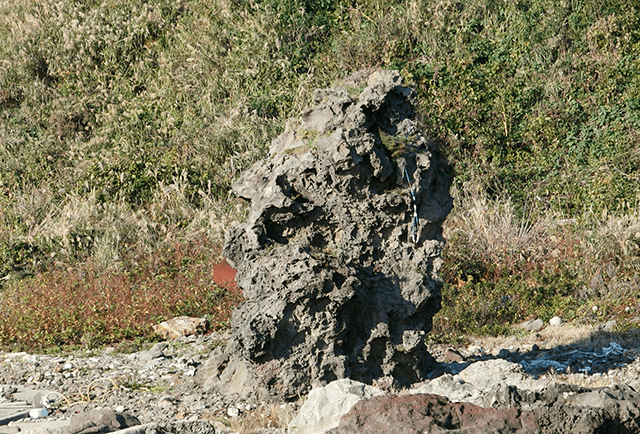
If you walk along the beach from Monzen Fishing Port, you can find the old wharf that used to be used for net fishing, as well as the decaying ruins of the old fishermen’s lodge. The rocks that dot the beach here are called Oni no Tou(?)seki Rocks, or Ogre’s Throwing Stones Rocks. It is said that long ago when the ogres built the stone steps of Akagami Shrine Goshado, they were unable to complete the final step and threw these rocks on the shore in their anger.
west coast
Home >
What is the Oga Peninsula - Ogata Geopark? >
Geosites and spots >
west coast area >
west coast

